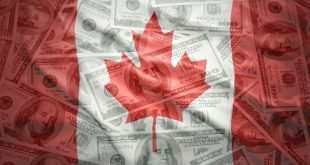Contango is traditionally defined as the case where the commodity market witnesses prices for delivery at later dates that are higher than immediate exchange prices; that is to say, it is a market condition signaling oversupply and a situation where traders exploit the moment to buy for storing oil for delivery at later dates.
The opposite market situation is widely known as ‘Backwardation’ which classically takes place at times of market deficit and under such circumstances, prices for front-month contracts surge higher than the ones further out in time.
Earlier in November, the WTI crude futures curve has already switched into contango while the Brent front-month to second-month futures prices slipped into contango this week.
This is why oil market investors are getting prepared to deal with sufficient supply and weak demand. Several oil market indicators are reducing supply concerns in oil markets, adding downward pressure to prices as traders focus on weak demand.
The premium for Oman futures over Dubai swaps dropped to less than $1, which signals much softer demand. Oil futures and swaps globally are showing signs of easing supply concerns and triggered fresh concerns about additional weakness in crude oil demand.
The prompt spreads in the US benchmark, WTI Crude, have already reached the contango situation, signaling enough near-term supply. Brent Crude front-month to second-month futures prices also dipped into contango earlier this week.
One more market metric that is closely watched for clues and signs related to demand in Asia, is the premium of Oman futures over Dubai swaps. That premium dropped on Thursday to below $1 per barrel versus a premium of over $15 a barrel in March this year. This could mean a looming softer demand. The premium fell by around 80% in November according to Bloomberg’s estimates.
So far in November, oil prices fell amid growing doubts regarding probable economic slowdown and frustrating Covid infections in China, where some forms of restriction on mobility returned to everyday life in at least 50 large cities and urban neighbourhoods.
China is touching near-record numbers of new Covid infections on a daily basis, the current case is similar to the April 2022 peak when the financial center Shanghai entered lockdown for successive weeks. This kind of news is sufficient to start depressing fuel demand as 48 Chinese cities that currently have some form of restrictions on movements.
Areas that do account for nearly 20% of the Chinese GDP suffer from the latest Covid restrictions. Accelerating Covid cases and the return of restrictions and fears of lockdowns are factors that impact oil prices this month as the market worries about a mega slowdown in Chinese economic growth and fuel demand, on top of already existing global recession fears.

 Noor Trends News, Technical Analysis, Educational Tools and Recommendations
Noor Trends News, Technical Analysis, Educational Tools and Recommendations




